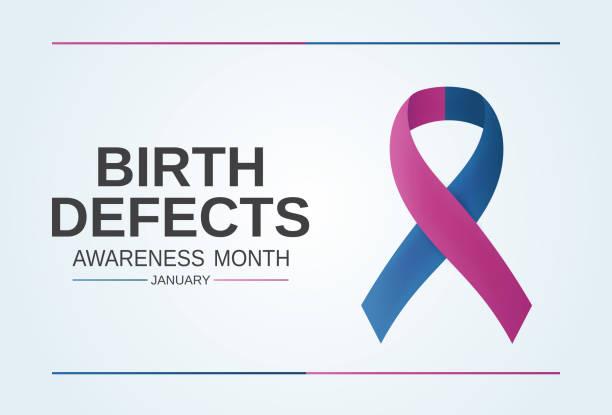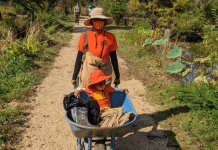I recently learned that January is Birth Defect Awareness Month. It’s odd that I didn’t know about it because I was born with a birth defect, which I mentioned in this article about my son getting ear tubes. Birth defects aren’t super rare, as they affect 1 in 33 people in the US, according to the CDC. There are factors that increase the risk of a birth defect forming during pregnancy, but not every birth defect can be prevented. During Birth Defect Awareness Month, I hope others will see how birth defects are all around us. I also hope that we can celebrate how each individual with a birth defect is incredible, not in spite of their birth defect but because of it.

My Birth Defect Story
My birth defect is something you can see — if I let you. I was born with microtia (stage 2) which means that my ear was smaller and malformed — and that I was deaf in my left ear. I had reconstructive surgery when I was around 7 years old, but it wasn’t successful. So my ear is still malformed, and I have no hearing from my left ear.
I spent years hiding it, such as by wearing my hair down and in low ponytails when I played sports to keep it covered. I hated answering questions about it. And, I especially hated thinking that someone would look at me and see my ear and make a shocked or disgusted face. In high school, I was involved in all the things. I was class president, and I remember when I was giving a speech once, an extremely rude teenage boy yelled, “Don’t vote for her, she has a weird ear.” Jokes on him — I won that election, and now I work in politics and policy in Washington, DC. So, I’m doing alright despite his insult.
My experience with my birth defect shaped my life and who I became. Sometimes it has made my life harder, but as I’ve gotten older, I’ve embraced it. Because I’ve learned how to listen and position myself in a room where I can hear, I’ve become a thoughtful and trusted contributor in the workplace. I’m someone my friends can count on to listen, give advice when needed, and be supportive in ways many others aren’t. I’ve become open about my boundaries and struggles I’ve faced. Even a few years ago, I wouldn’t have dreamed of writing this article and putting this into the public sphere. I attribute these things in part to my learning to live with a birth defect.
Bringing Awareness to Birth Defects
There are lots of types of birth defects. Some are external, like mine, but many can’t be seen, such as congenital heart defects. Birth defects are something that I don’t think many people think about often. Unless it impacts you or a loved one has one, you probably don’t think that someone around you has a birth defect.
For me, bringing awareness to birth defects means being more open with those in my sphere about having one. By speaking up and saying, “Hey, I need to sit on the other side because I cannot hear on my left side. Would I be able to take that seat instead?” I am empowered to share my story and bring awareness to others. Saying simple things has made me more comfortable talking about my birth defect. I hope it has made others more comfortable in hearing about it too.

I’m not asking you to constantly think about this. Instead, I’m asking you to keep an open mind and heart around birth defects. If someone tells you they have one, don’t immediately jump into lots of questions. Thank them for being open with you. Ask them if there is anything you can do differently to accommodate them. For example, it’s helpful if people don’t stand or sit on my left side if possible. And don’t treat them any differently, because they are the exact same person they were from before you knew.
By being more aware of birth defects, you help create an environment where everyone can feel welcome and included. When that happens, our friends, family, and those around us are happier and feel more productive. This is something everyone benefits from, which will continue to make the world a better place.










![Lauren Engler: Mom of the Month [April 2024]](https://dcmoms.com/wp-content/uploads/2024/04/Lauren-Engler-218x150.png)



